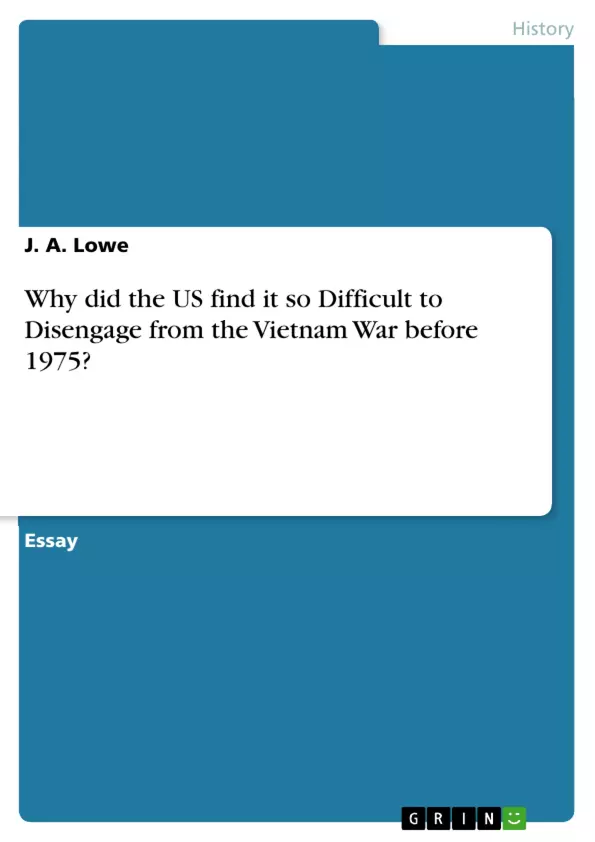The United States committed officially 9 years of involvement to the Vietnam War. The United States signed the Paris Peace Accords on January 27th 1973 confirming that the United States would remove their troops from Vietnam and the war officially ended in 1975. The question as to whether the war could have ended sooner was raised by government officials during the involvement years, including Senator George McGovern who in a 1972 interview in The Free Lance-Star newspaper said that ‘if Nixon can end the war by November he could have stopped it during his first few months in the White House’. The question has also been raised by historians including John Maberry who suggests that ‘this war could have ended with the same result well before the 1973 cease-fire’ and Van Nguyen Duong who argues that ‘the war could not be ended sooner but was prolonged to the point it confused and demoralised the American people’ . This essay will assess the reasons for America’s long term involvement in the Vietnam War and the extent to which an earlier withdrawal was a possibility.
Table of Contents
- Introduction
- Reasons for the Long War
- Honourable Exit
- Vietnamisation
- Secret Peace Talks
- The Mad Bomber Campaign
- Possibilities for Earlier Disengagement
- LBJ and Early Negotiations
- The 1968 Initiatives
- Conclusion
Objectives and Key Themes
This essay examines the reasons behind the protracted US involvement in the Vietnam War and assesses the possibility of an earlier withdrawal. It analyzes the factors contributing to the drawn-out conflict and investigates key moments where a peace settlement might have been reached sooner.
- The desire for an “honourable” exit from the war, balancing American credibility with the South Vietnamese situation.
- The implementation of “Vietnamisation,” aiming to empower South Vietnamese forces and gradually withdraw American troops.
- The challenges and obstacles encountered during the secret peace talks between the US and North Vietnam.
- The impact of Nixon's “Mad Bomber” campaign and its implications for the negotiation process.
- Potential opportunities for earlier peace settlements during the presidencies of Lyndon B. Johnson and Richard Nixon.
Chapter Summaries
The essay explores the intricate reasons why the Vietnam War extended for such a long period for the United States, focusing on President Nixon's administration. The first section examines the concept of an "honourable" exit, emphasizing the difficulty of achieving a withdrawal that wouldn't be perceived as abandoning South Vietnam. The second section analyzes the implementation of the "Vietnamisation" policy, highlighting the challenges in empowering South Vietnamese forces to effectively defend themselves.
The essay then delves into the complexities of the secret peace talks, particularly the mistrust between the US and South Vietnam, and the difficulties in negotiating with North Vietnam. It further examines the "Mad Bomber" campaign and its role in the context of peace negotiations.
The final chapter explores specific occasions where an earlier withdrawal could have been a possibility. This includes President Johnson's early attempts at negotiation in 1965 and the missed opportunities in 1968.
Keywords
The key themes and concepts explored in this essay are: Vietnam War, US involvement, disengagement, honourable exit, Vietnamisation, peace talks, Nixon, Kissinger, LBJ, North Vietnam, South Vietnam, Mad Bomber campaign, military tactics, diplomacy, international relations.
- Citation du texte
- J. A. Lowe (Auteur), 2014, Why did the US find it so Difficult to Disengage from the Vietnam War before 1975?, Munich, GRIN Verlag, https://www.grin.com/document/278879



